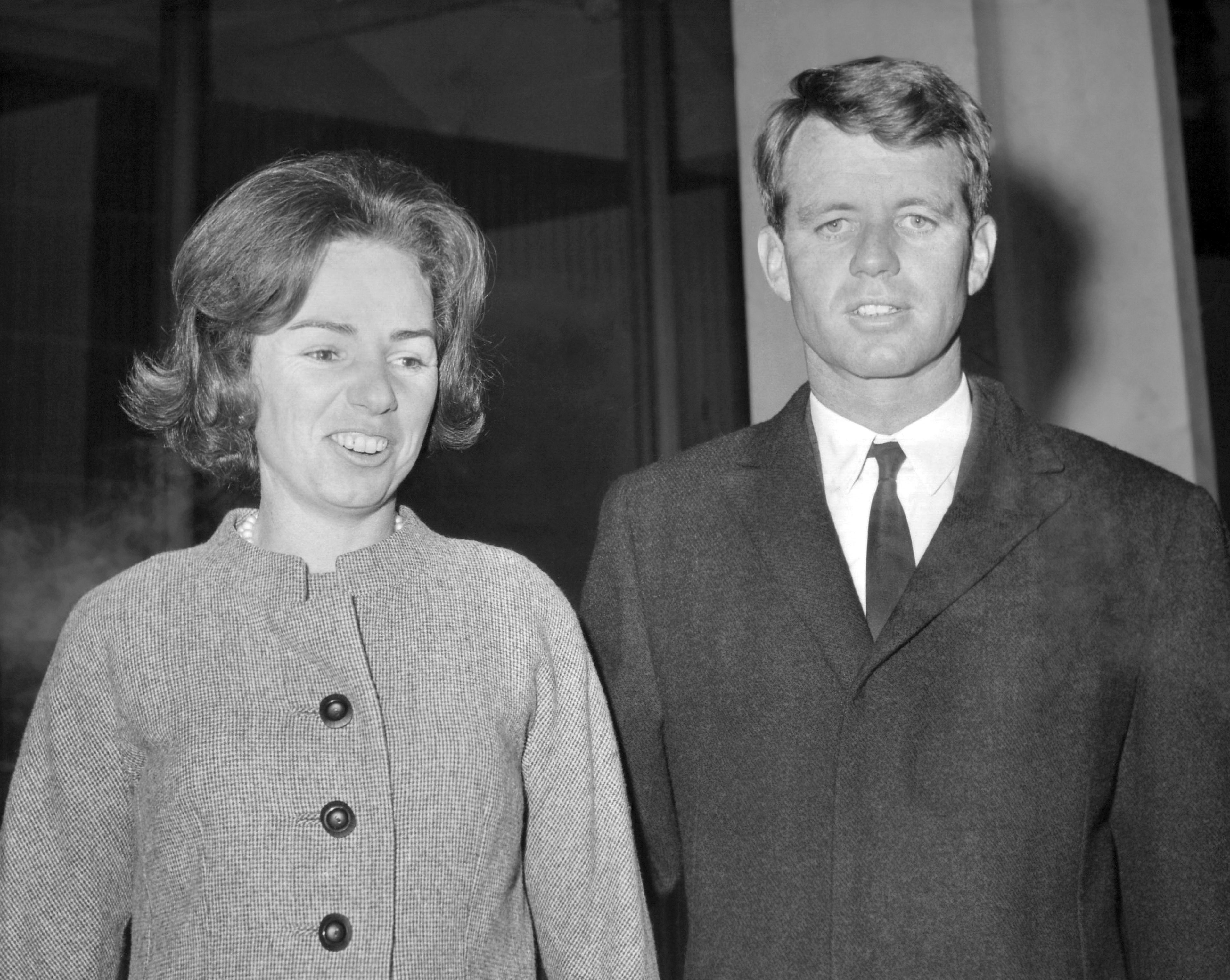Defense spending bills see surge in unrequested items
WASHINGTON, D.C. — Members of Congress have added just over $38 billion for 1,499 military research and procurement programs in fiscal 2025 that the president didn’t seek, according to a previously unpublicized database analyzed by CQ Roll Call.
About half the weapons-related projects are in the Senate Defense appropriations bill and half in the House bill, according to the review by Taxpayers for Common Sense, which is being made public Thursday.
If past is prologue, the vast majority of the congressional priorities will become law.
The taxpayers group began compiling the data only a few years ago. Between fiscal 2021 and 2024, they found the number of enacted congressional additions to defense research programs alone — not counting procurement — increased from 600 to 996, or 66 percent. When the group began to include procurement spending, it found a similar trend.
The fiscal 2025 increase is unusually large, jumping to 1,499 research and procurement programs from 1,216 requested in fiscal 2024. The fiscal 2024 total was pared down to 1,072 in the final spending law.
The value is also surging. At this point in the fiscal 2024 process, the value of the unrequested added projects in the two bills was just under $26 billion — far less than the pending $38 billion in fiscal 2025. House and Senate negotiators consolidated the nearly $26 billion down to $21 billion in the final fiscal 2024 Defense appropriations law.
The $21 billion in fiscal 2024 is greater than the budgets of four Cabinet departments.
Similar whittling for fiscal 2025 would still leave the enacted congressional additions above $30 billion.
Political budgeting
The Defense appropriations bill is a bipartisan product that takes into account a wide array of inputs, a Senate Appropriations Committee aide said.
“These increases are meant to help keep pace with inflation, address emergent requirements, and help sustain military readiness,” the aide said. “Senators consider the perspective of the administration, their colleagues, and many other stakeholders to ensure Congress is providing the necessary resources to best support our national security and servicemembers.”
Supporters of the appropriators’ approach say Defense Department officials are behind the projects. But there is no public documentation of that claim. The projects may have backing from a military official, university or contractor in a particular state, but they are not endorsed — or often even known about — in the Pentagon, according to insiders.
Fully 98 percent of the additions enacted in fiscal 2024 and proposed for fiscal 2025 were not even on senior leaders’ so-called unfunded priorities list of items that the services value but the president didn’t request.
Congressional padding of the defense budget with funds for parochial projects is not new. And appropriators point out that Congress has a duty to put its stamp on any president’s budget request. In some cases, lawmakers’ ideas have led to battlefield breakthroughs, including military drones.
But it is not widely known that Congress now adds about 1,000 discrete weapons projects worth a few million dollars apiece to each year’s budget, most of them brand new but some continuing existing work.
Driver of federal spending
Not included in the Taxpayers for Common Sense tally are congressionally approved boosts to programs for Defense Department personnel, operations and maintenance, or military construction accounts. Also not included are appropriations for the much smaller and less costly category of earmarks for local governments and nonprofit organizations that are awarded without competition.
Contracts awarded using appropriators’ additions for defense projects must by law be put up for competition. But experts say only one company bids in many cases, often because the technology is made by just one firm.
The taxpayers group calls the boosts for weapons funding “backdoor earmarks.”
Some of the additions are for big-ticket items such as warships. But more than 80 percent of the additions in the fiscal 2025 bills amount to $20 million or less, according to the new database, and this bevy of relatively small projects attracts virtually no attention.
“Five million dollars here and ten million there adds up quickly,” said Gabe Murphy, policy analyst at Taxpayers for Common Sense. “At the end of the day, these increases come to more than the Departments of Commerce and Transportation budgets combined. At this rate, maybe we need a Secretary of Pentagon Budget Hikes just to keep track of it all.”
The money is inserted into funding bills with little debate and limited transparency about the purposes of most of the initiatives, their benefit for the military and the extent of competitive bidding. No government audit agency has produced a review that would answer those questions.
To free up funds for favored programs, appropriators mostly find cuts — proponents of the practice prefer to call them savings — in programs the Pentagon expressly sought.
About half the House floor amendments to increase fiscal 2025 Defense funding for these weapons accounts would be offset by cuts to so-called operations and maintenance programs, a category that includes much of what is needed to keep the military running: training, upkeep of equipment and facilities, civilian salaries and more.
“These anonymous increases are largely paid for with undisclosed raids on the Pentagon’s actual priorities included in its budget request,” said Murphy. “Without some basic transparency, most lawmakers let alone taxpayers don’t get a chance to consider these tradeoffs.”
‘Emergency’ additions
The House’s fiscal 2025 bill includes $12.9 billion for 724 weapons-related research and procurement programs, none of which were requested by the president, according to the new database.
The House bill nevertheless stayed within the president’s total defense spending request, effectively finding the $12.9 billion by reducing the Pentagon’s requests elsewhere.
The Senate’s measure, by comparison, would carve out $25.44 billion for developing or building 775 unrequested defense systems. About half of those are paid for by cuts elsewhere. The other half are designated “emergency” spending — money that is exempt from budget caps.
Critics say the Senate panel’s use of the term emergency is expansive. The designation typically suggests an urgent and unforeseen requirement. But the word is used in the Senate’s fiscal 2025 bill to cover even programs that are funded year in and year out.
Take the National Guard and Reserve Equipment Account. The Pentagon has never requested money for this fund, but Congress appropriates close to $1 billion for it every year. Senate appropriators recommended doing so again in fiscal 2025 — but they dubbed $650 million of it emergency money.
The emergency rubric is also applied to programs such as design work on a Navy “next generation” fighter jet that is years from being deployed.
The Senate bill would make available $500 million in research money not requested by the Navy for this effort. The Navy had decided to reduce fiscal 2025 spending by $1 billion from fiscal 2024 to use the money for what it saw as nearer-term and more urgent readiness needs — all but saying the fighter jet program is less pressing than other priorities.
Also included in the Senate bill are unrequested billions of dollars to complete what would be the largest shipbuilding appropriation in history: $37 billion. A destroyer, an attack submarine and three amphibious ships netted unrequested funding in the bill.
Big-ticket items aside, most additions in both the House and Senate bills are valued at far less money.
‘Securing’ funds
Lawmakers from both parties issued statements this summer promoting the funding to aid their state or district interests. But multiply it by 1,000 each year, and the price tag continues to swell, critics say.
Sen. Jeanne Shaheen, D-N.H., a member of the Senate Armed Services Committee and the Defense Appropriations Subcommittee, cited her “leadership for New Hampshire’s aerospace industry” and noted “work done in Londonderry on L3 Harris’s Enhanced Night Vision Goggle-Binocular.”
That program would receive $10 million in the Senate bill after having netted $160 million in fiscal 2024.
L3Harris Technologies, through its political action committee and individuals associated with the company, is one of several defense contractors that are among the top contributors to Shaheen’s campaigns — as those companies are for many lawmakers on defense oversight committees.
Rachel Huxley-Cohen, Shaheen’s spokeswoman, said the goggles program has been funded because it works.
“As an appropriator and a senior member of the U.S. Senate Armed Services Committee, Senator Shaheen is committed to supporting our national security by ensuring our service men and women have access to the best equipment, which, according to soldiers themselves, is the ENVGB goggles manufactured by L3Harris and others,” Huxley-Cohen said.
Meanwhile, Senate Defense Appropriations Chairman Jon Tester, D-Mont., who faces a tight reelection bid this fall in one of the Senate’s most closely watched races, touted the local impact of his work on the panel.
The bill includes “over $220 million in total for Montana military sites, universities, businesses, and stakeholders,” $109 million “for defense-related research at universities in Montana,” and $111 million for “defense programs being worked on by Montana companies and stakeholders,” he said.
Sen. Gary Peters, D-Mich., a member of Armed Services and Appropriations panels, took credit for six F-15EX fighter jets funded in the Senate bill but not formally requested, and he pointed out he has “long advocated” that they be stationed in his state.
In the House, Rep. Kay Granger, R-Texas, a veteran appropriator who is retiring, celebrated the 76 F-35 fighter jets that House appropriators funded, eight more than requested.
The jets are built in her district by Lockheed Martin Corp. That company’s PAC and individuals tied to the company have been a top contributor to Granger’s campaigns over the years.
Rep. Mike Garcia, R-Calif., another member of the Defense spending panel, touted about $180 million in unrequested funding for three U.S.-Israeli defense projects. The American-Israel Public Affairs Committee’s PAC is a leading contributor to his campaigns.
The Senate Appropriations Committee report accompanying its fiscal 2025 Pentagon spending bill sought to defend the addition of billions of dollars in the bill for so-called emergency purposes.
The committee worked closely with the Defense Department in writing its bill, it said. “Many” of the additional funding recommendations responded to unfunded priorities, while others responded to requirements not known when the budget was submitted, it added.
Sen. Susan Collins of Maine, the top GOP appropriator, has said unrequested funding has bankrolled spare parts that will keep 221 military aircraft flying, 1,200 counter-drone systems for the Army and $349 million to upgrade Marine Corps barracks.
“This additional funding is sorely needed to meet global threats that combatant commanders describe as the most dangerous in 50 years,” Collins said at the Aug. 1 markup of the Defense bill.
Inscrutable process
Transparency and oversight on these programs, at least outside the Appropriations committees, is scant.
The additions are typically described in funding tables or amendment text by just a phrase or a few words — such as $3 million for “Automation Innovation for Sustainment,” $2.5 million for “Digital Test Facility Models” or $4 million for “Transport Layer Software Architecture.”
Voting on amendments to add money to a request or create one of these programs typically occurs by voice vote without debate. The votes often happen as part of a so-called manager’s package of uncontroversial amendments that are not even stated aloud and are not widely read.
Congressional, Pentagon and industry insiders say pitches for the funding boosts come to Capitol Hill after contractors or officials at military labs or other Defense Department installations make their case to a member of Congress or staff.
These requests are vetted by Appropriations aides, often without senior leaders of the Defense Department or the military services knowing about the full range of projects, according to Pentagon officials who have requested anonymity.
The technologies that get funded through this process have not been subjected to — or may even have been rejected by — the executive branch in the annual budget-writing process, which seeks to weed out duplication and make tradeoffs among research and procurement programs in the individual services.








